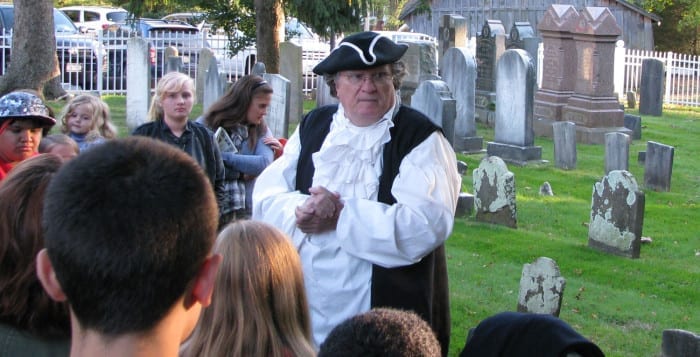By Susan Risoli
Plants, trees and earth. They might look solid and unmoving. But today’s landscape professionals say that when it comes to the ways homeowners experience their outdoor spaces, trends are fluid and evolving.
As landscape design expands to include more options, Long Islanders are pushing the boundaries of the outdoor season as much as possible, said Jason Merz, owner of Metamorphosis Landscape Design in Smithtown. “People want to get as much use of their backyard as they can,” he said. “They expect to enjoy it from March or April through October.” And in general, “people are spending a lot more money on their homes and their landscaping than they were 10 or 15 years ago,” Merz said.
 Slaving over a hot stove in a sweltering kitchen? Please. These days, cooks are bringing their culinary talents into the backyard, preparing festive meals in full view of their guests. Merz said his company gets requests for “almost a full-on kitchen outside, as part of the patio.” Sinks, refrigerators, large barbecue grills, bar caddies — “they become great focal points for the backyard,” he said. And outdoor heaters keep the setting cozy in the chilly temperatures of early spring and late fall.
Slaving over a hot stove in a sweltering kitchen? Please. These days, cooks are bringing their culinary talents into the backyard, preparing festive meals in full view of their guests. Merz said his company gets requests for “almost a full-on kitchen outside, as part of the patio.” Sinks, refrigerators, large barbecue grills, bar caddies — “they become great focal points for the backyard,” he said. And outdoor heaters keep the setting cozy in the chilly temperatures of early spring and late fall.
Customers’ imaginations are quite literally catching fire. Merz said recently he has seen more and more people using elements such as fire pits and outdoor fireplaces. He’s also noticed that “a lot more people are looking to use outdoor structures, like a cabana or pool house.”
Outdoor televisions are big this year, Merz noted. “This is one of the hottest things lately,” he said. “People use it to watch the football game while they’re sitting outside.” The TVs are mounted on the house or the roof line, in spots where they can be protected from rain, wind and sun.
Swimming pools are no longer limited to basic rectangular shapes. “We’ve been doing more custom gunite pools,” Merz said, with disappearing infinity edges becoming a popular favorite. When it comes to paving stones used for exterior flooring, homeowners “want to get away from a cookie-cutter look,” he said. “Lots of people like natural stone pavers, like bluestone and granite, around their swimming pools.”
 Increasingly, consumers want more than just one new backyard feature, asking instead for an integrated design of the entire space. “The trend is, people are calling in and saying, ‘We know we need this project done, but we need a design,’” Merz said. “We provide the landscape design for them, and then we build it.”
Increasingly, consumers want more than just one new backyard feature, asking instead for an integrated design of the entire space. “The trend is, people are calling in and saying, ‘We know we need this project done, but we need a design,’” Merz said. “We provide the landscape design for them, and then we build it.”
Irena Romovacek, landscape designer for Hicks Nurseries in Westbury, has seen changes in the types and colors of plants her clients prefer. In recent years, people are being kinder to our beleaguered planet by using more sustainable plants, “in keeping with nature,” she said. This greener strategy calls for succulents instead of grass, “because grass needs a lot of water and fertilizer to make it look good.”
Hamptons outdoor living might include tropical plants such as palm trees, Romovacek said, because the large palm leaves visually offset and balance outdoor displays of modern sculpture that are often a part of East End outdoor spaces. “And tropicals are fun, they’re exotic, they’re unusual,” she said. “Your friends are going to see it and say, ‘Where’d you get that?’”
 Color palettes of plantings have changed. “My clients used to like more reds and orange. Now it’s a cooler palette — more blues and greens,” Romovacek said. But even with these softer schemes, she still creates dramatic interest with the strategic placement of shade, or by using plants with colored stems. She and her colleagues have embraced the shift to cooler colors and changed with the times, she said, designing spaces they and their clients can be proud of. “Some of the best landscapes I have designed are green on green,” she pointed out.
Color palettes of plantings have changed. “My clients used to like more reds and orange. Now it’s a cooler palette — more blues and greens,” Romovacek said. But even with these softer schemes, she still creates dramatic interest with the strategic placement of shade, or by using plants with colored stems. She and her colleagues have embraced the shift to cooler colors and changed with the times, she said, designing spaces they and their clients can be proud of. “Some of the best landscapes I have designed are green on green,” she pointed out.
Some people want the colors used for decorating inside the house to be brought outdoors. In this way, Romovacek said, color makes a connection between inside and outside environments. “I ask my clients, what are your favorite colors? What colors do you not want to see?”
A growing interest in outdoor music coming through backyard speakers is another recent trend, Romovacek said, and so is landscape lighting. “For the past three years or so, people are asking for more outdoor lighting, and they’re controlling their outdoor lights with their phones,” she said. Some of it is for safety — illuminating paths or stairs — and some is used to show off or play down parts of the yard. “It doesn’t have to be a lot of lighting to be successful,” she said. “You just want to accentuate some of the elements in your landscape.” Some clients ask her to use outdoor lights to simulate the soft, bewitching allure of moonlight, Romovacek said, and others have requested lighting displays that change color with the seasons.



 The best treatment plan is a multifaceted approach, said Marco Palmieri, D.O. Palmieri is medical director of the Center for Pain Management at Stony Brook Medicine. “A pretty high percentage” of post-mastectomy patients experience pain, he said. He and his colleagues recommend a well-structured regimen that could include medications, interventional approaches, physical therapy, acupuncture, massage therapy, diet, exercise and, in some cases, treatment by a pain psychologist, Palmieri said.
The best treatment plan is a multifaceted approach, said Marco Palmieri, D.O. Palmieri is medical director of the Center for Pain Management at Stony Brook Medicine. “A pretty high percentage” of post-mastectomy patients experience pain, he said. He and his colleagues recommend a well-structured regimen that could include medications, interventional approaches, physical therapy, acupuncture, massage therapy, diet, exercise and, in some cases, treatment by a pain psychologist, Palmieri said.















